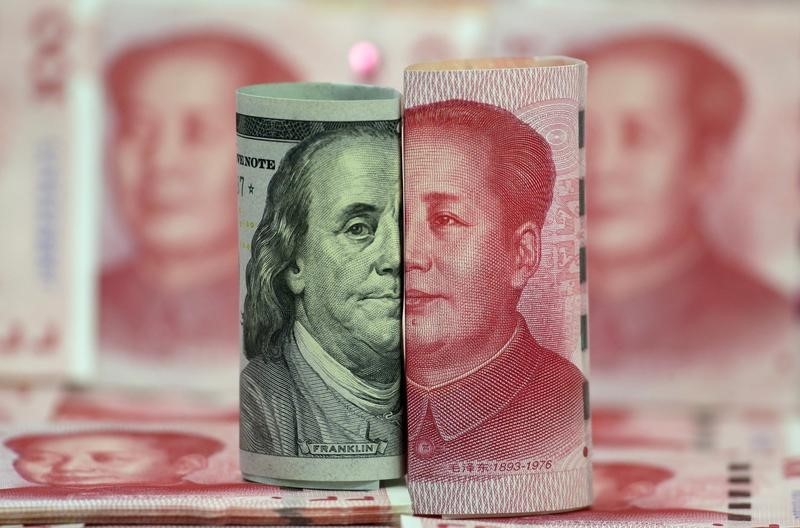By Jemima Kelly
LONDON (Reuters) - The dollar inched up from a 2-1/2-month low on Friday but was on track for its heaviest weekly loss since 2009, as investors awaited U.S. employment data for justification of the view that the Federal Reserve will not raise rates in 2016.
The dollar has shed almost 3 percent against a basket of major currencies (DXY) since Monday as expectations that the Fed would raise interest rates at least once this year have all but evaporated amid signs of domestic weakness and broader concerns over global growth.
It steadied on Friday, along with most major currencies, as markets held fire before the non-farm payrolls report - usually the most closely watched number in the monthly data calendar
The dollar index was up 0.2 percent by 0830 GMT at 96.651, having traded as low as 96.239 on Thursday, its weakest since late October.
Commerzbank (DE:CBKG) currency strategist Thulan Nguyen, in Frankfurt, said a weak payrolls figure would be unlikely to drive the dollar down much further as it had already fallen so much in recent days.
"There is a general scepticism towards a proper rate hike cycle by the Fed – that's been driving down the dollar (but)there's probably not that much room left for dollar weakness," she said. "A better labor market report could bring back some confidence in the rate cycle."
The euro edged down 0.2 percent <EUR=> to $1.1190, but for the week was on track for a more than 3 percent gain - its biggest since October 2011.
That was despite European Central Bank chief Mario Draghi saying on Thursday that the risk of acting too late on ultra-low inflation was greater than that of acting too early, suggesting more policy easing may be needed.
Against the yen, the dollar traded flat at 116.80 yen, close to a two-week low of 116.525 <JPY=> and having erased an upward spike triggered a week ago by the Bank of Japan's move to adopt negative interest rates.
The nonfarm payrolls report is expected to show that employers added 190,000 jobs in January, according to a Reuters poll. But figures on Thursday showed U.S. jobless claims rose more than expected last week, suggesting labour conditions could be weaker than many believe.

"The charts suggest the short dollar/yen trade is still the advantageous trend trade, but with the non-farm payrolls tonight this data point may give a better entry point to sell strength in dollar/yen," Evan Lucas, market strategist at IG in Melbourne, wrote in a note to clients.